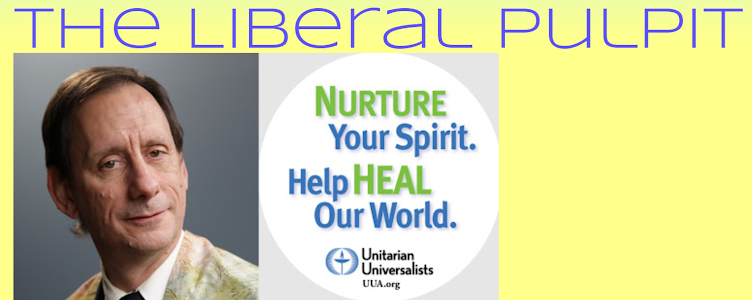Holy Anger, part 1
Wrote Rebecca Traister:
“What happened inside the room was an exceptionally clear distillation of who has historically been allowed to be angry on their own behalf, and who has not.”The room to which Traister was referring was the chamber of the Senate Judiciary Committee on Thursday September 27, the day when testimony was heard by that Committee and by much of the nation – first, from a woman, then from a man. The woman was, she said, terrified, but her tone was calm and her language precise. The man, by sharp contrast, was clearly angry, and his language much more figurative.
Whether it crossed over from Holy Anger to Unholy Rage, I will, for now, not comment, but all sides agreed he was angry and showing it.
Male anger won the day. I watched that anger’s success unfold in real-time on the betting market. I listened to the woman’s testimony on the radio that morning, and to the man’s testimony that afternoon. As he spoke, I found myself, checking in at a website called PredictIt.org – which allows people to place bets on all manner of events – and the odds of an event happening are determined by how many bets are placed that it will happen – so the odds are continually adjusted as new bets come in. One of the questions people were betting on was whether that man would occupy the position for which he was then seeking Senate approval.
Those odds were sitting at 40 percent as the man began his opening statement. By the time his opening statement was done, the betting market showed his odds had significantly improved to 50-50, and they continued to improve through the questioning period. Male anger won the day, as it had won the day in the same room in 1991.
Women’s anger, on the other hand, is often discounted. There may be an exception that anger on behalf of her children is granted some weight. But anger on her own behalf is likely to fall on deaf ears.
Hence, Traister’s observation that,
“What happened inside the room, was an exceptionally clear distillation of who has historically been allowed to be angry on their own behalf, and who has not.”While the featured woman inside the room did not display anger, many women surrounding that room and across the country were, as Traister put it, “incandescent with rage and sorrow and horror.”
She goes on to say,
“On social media, I saw hundreds of messages from women who reported the same experience, of finding themselves awash in tears, simply in response to this woman’s voice, raised in polite dissent. The power of the moment, the anxiety that it would be futile, the grief that we even had to put her — and ourselves — through this spectacle, was intense.”Physiologically, what was happening in both that woman and that man was probably very similar: something called the fight-or-flight reaction. The fight-or-flight reaction gears us up face a threat – to either fight it -- or run away or hide. Adrenaline kicks up. Cortisol, heart rate, blood pressure, and respiration rate all increase. That arousal will help you fight, or fly.
But which will be? Do you run or hide – or do you fight? If we fight, the arousal becomes the feeling of anger. If we flee or hide, the arousal becomes the feeling of fear. The arousal itself is autonomic, and we then very quickly interpret that arousal as anger or fear -- and that makes a big difference. Anger makes you more risk-seeking. Fear makes you more risk-avoidant. Feeling anger, people overestimate their ability to overcome an obstacle, defeat an opponent, or handle whatever’s coming at them. Feeling fear, people underestimate their ability to successfully confront a situation.
Imagine an attacker or opponent with the same height, weight, age, and physical condition as you. The lens of fear makes that opponent look bigger than you. The lens of anger makes that same opponent look smaller than you.
Fear is: you hear your body telling you “don’t be idiot; run, hide, be conciliatory and submissive.” Anger is: you hear your body telling you, “don’t let this twerp push you around.” Your body, in fact, is saying the same thing in both cases. It’s saying, “We’re aroused!” – and you hear it as either anger or fear.
Often that moment of interpretation happens unconsciously – and we find ourselves scared or angry without any conscious experience of having chosen the feeling. But if there’s time to do so, we can sometimes be talked – or talk ourselves -- out of fear into anger – or out of anger into fear.
The strategies we have developed through experience become a habit – and habit is powerful in directing whether we go more to fear and anxiety or to anger. For men, expressions of ire serve as a signal of strength and power. Anger works for men, so men might form the habit of asserting their power angrily, or they might, on occasion, choose anger as a strategy when it isn’t their habit.
Women have been taught that anger won’t work for them. That may be changing. The #MeToo movement has seen a rise both in women’s willingness to be angry and in their willingness to express that anger.
Last March, a survey by Elle magazine found that 83 percent of women who identified with the Democratic Party get angry at the news at least once a day.
“Many of the women shouting now are women who have not previously yelled publicly before, many of them white middle-class women newly awakened to political fury and protest.” (Traister)* * *
This is part 1 of 3 of "Holy Anger"
See next: Part 2: Anger is a Gift
Part 3: Anger's Sacred Place


No comments:
Post a Comment